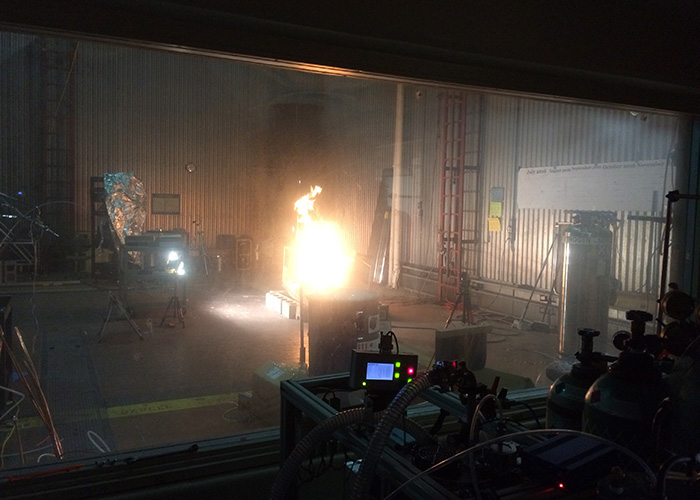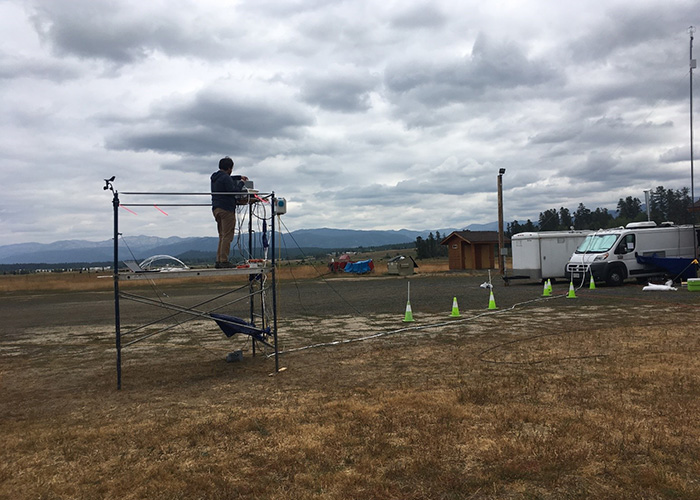Drexel Researcher Studies Effects of Forest Fires on Climate and Air Quality
 A controlled burn experiment at the Missoula Fire Sciences Lab in 2016
A controlled burn experiment at the Missoula Fire Sciences Lab in 2016
May 23, 2019
Ezra Wood, PhD, associate professor of chemistry, and his research group are part of a multi-year project studying the atmospheric chemistry of smoke from forest fires. Wood shares some background information and updates on the project.
In recent years, several large, highly destructive forest fires in the Western U.S. have made international headlines for their adverse effects on air quality. The Carr Fire of 2018, for example, which burned 229,651 acres of land, led to San Francisco having the world’s worst air quality for a period of several days. The increased incidence of forest fires is due to a number of factors, including land-use management and climate change, and is expected to continue in the future.
In addition to being affected by climate change, forest fires also affect climate in several ways. For example, forest fires emit large amounts of the greenhouse gases carbon dioxide and methane, and various components of the smoke can either scatter or absorb incoming solar radiation. Smoke particles that scatter radiation have a cooling impact, whereas dark, absorbing smoke particles have a warming impact.
To tackle the impacts of forest fires on air pollution and climate, it is crucial that we know the amount of gases and particles emitted, and how they chemically transform in the atmosphere when exposed to sunlight.
My research group is one of several dozen research groups from universities, national laboratories, and private companies across the country currently collaborating on a four-year project, funded by the National Oceanic and Atmospheric Administration, addressing these questions.
 Drexel Department of Chemistry postdoctoral fellow Daniel Anderson calibrates the peroxy radical sensor in McCall, Idaho.
Drexel Department of Chemistry postdoctoral fellow Daniel Anderson calibrates the peroxy radical sensor in McCall, Idaho.
In 2016, our group traveled to the U.S. Forest Service’s Fire Lab in Missoula, Montana, to study pollutant emissions and photochemistry under controlled conditions in which one particular type of wood was burned at a time. Last summer, we traveled to rural Idaho and deployed an analytical sensor that quantifies concentrations of peroxy radicals — short-lived trace compounds that provide information on the rates of photochemical transformations.
This summer, we will travel to Boise, Idaho to investigate the interaction between smoke and urban emissions. Neither smoke nor urban “smog” are good to breathe by themselves. It is not well understood, however, if there is a synergistic interaction between the two types of pollution. Are the formation rates of certain photochemically produced pollutants higher in smoky urban air than in either type of pollution in isolation? We hope to answer that question this summer! In addition to deploying our peroxy radical sensor, we will also deploy our new chemical ionization mass spectrometer, which will enable us to quantify several fire-specific compounds in urban air.